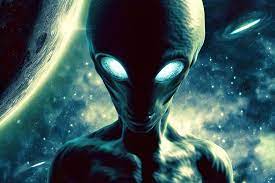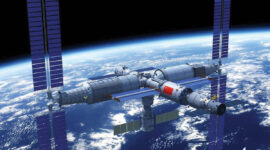January, 2025, Scientists have announced the most compelling evidence yet for potential life on an exoplanet, sending ripples of excitement and cautious optimism throughout the scientific community and beyond. The focus of this groundbreaking news is K2-18b, a planet located approximately 124 light-years away in the constellation Leo. This exoplanet has long been of interest to astronomers as it resides within its star’s habitable zone, the region where temperatures could allow for liquid water to exist on the surface – a crucial ingredient for life as we know it. Utilizing the powerful James Webb Space Telescope (JWST), an international team of researchers has detected the presence of two chemicals in K2-18b’s atmosphere that are considered strong biosignatures: dimethyl sulfide (DMS) and dimethyl disulfide (DMDS). On Earth, these molecules are produced almost exclusively by living organisms, primarily microscopic marine algae known as phytoplankton.
The detection of DMS and DMDS in the atmosphere of K2-18b is particularly significant because these chemicals are not known to be generated in substantial amounts through non-biological processes. While previous observations by the JWST in 2023 had revealed the presence of methane and carbon dioxide in the planet’s atmosphere – the first carbon-based molecules found on an exoplanet in a habitable zone – the new findings of DMS and DMDS provide a more direct link to potential biological activity. The concentrations of these sulfur-based molecules in K2-18b’s atmosphere appear to be thousands of times higher than the levels found on Earth, further suggesting a biological origin. This discovery has led scientists to believe that K2-18b, which is considered a “Hycean” world – an ocean-covered planet with a hydrogen-rich atmosphere – could indeed be teeming with microbial life similar to that found in Earth’s ancient oceans.
However, the researchers emphasize that this is not a definitive discovery of alien life. The findings, published in The Astrophysical Journal Letters, represent the strongest evidence to date, but further observations are needed to confirm the presence of DMS and DMDS and to rule out any potential non-biological explanations for their existence. The statistical significance of the current detection is at a “three-sigma” level, indicating a 0.3% probability that the findings are due to chance. Scientists typically seek a “five-sigma” level of confidence for such groundbreaking discoveries. Nevertheless, the lead researcher, Professor Nikku Madhusudhan from the University of Cambridge, expressed optimism, stating that they could realistically confirm the signal within one to two years with additional observation time using the JWST.
The implications of potentially confirming life on K2-18b are profound. If this discovery is validated, it would suggest that life may be common in the galaxy, as K2-18b is not an Earth-like planet but a Hycean world, a type of exoplanet believed to be quite prevalent. This would open up a whole new avenue in our search for life beyond Earth, focusing on these water-rich worlds with hydrogen-dominated atmospheres. It could also revolutionize our understanding of the conditions necessary for life to arise and evolve. While the life potentially present on K2-18b is expected to be microbial, the sheer existence of life beyond our planet would be a monumental shift in human history and our cosmic perspective.
In the coming years, the scientific community will be eagerly awaiting further data from the James Webb Space Telescope to either confirm or refute these exciting findings. More observation time will allow researchers to strengthen the statistical significance of the DMS and DMDS detection and to search for other potential biosignatures in K2-18b’s atmosphere. This discovery underscores the incredible potential of advanced telescopes like JWST in our quest to answer one of humanity’s most fundamental questions: are we alone in the universe? The possibility of life thriving on a distant, alien ocean world offers a tantalizing glimpse into the vast possibilities that lie beyond our solar system and marks a significant step forward in the field of astrobiology.




